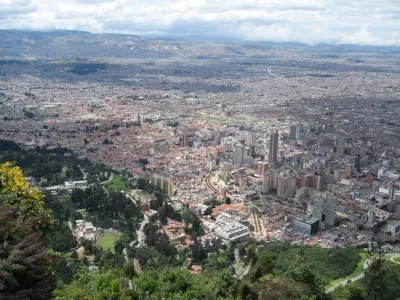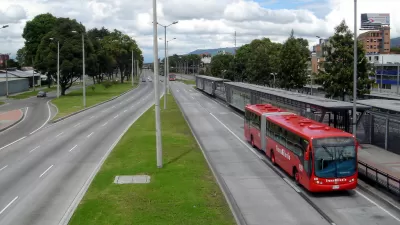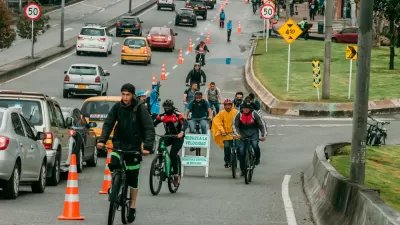The founding of Ciudad Techo in 1961 just outside of Bogota, Colombia played a key role in a strategy by the United States to beat back communist intrusions into Latin America during the height of the Cold War.

Zachary Laub reports in The Wilson Quarterly on the fascinating history of Ciudad Techo, a satellite city established on what was an abandoned airport on the outskirts of Bogota, Colombia. In 1961, President Kennedy laid the cornerstone for the first of what would become 10,000 homes in a plan to head off potential intrusions by communists into Colombia. By providing housing and a new sources of funding to Latin American countries, Laub writes, Kennedy hoped to "undercut radical proposals by raising the living standards of rural peasants and the urban poor. Once these formerly impoverished groups had been given a stake in the status quo, they would be loath to support far-left political parties or communist guerrilla movements." The city was the result of Kennedy's Alliance for Progress, described as "a New Deal, projected abroad." It was intended to spread middle-class American comforts, and consumer capitalism, throughout the Americas. However, many critics found Ciudad Techo underwhelming and poorly planned.
Most of Techo’s homes are two stories tall, and some have a haphazard third story stacked on top. They are canary yellow, lime green, silver with blue diamonds, and powder blue, and they line landscaped boulevards and snaking culs-de-sac, offering visual respite from the development’s surroundings: rows and rows of drab four- and five-story block apartment buildings that appear as if they extend all the way to the eastern cordillera on the horizon. The houses are all the same width, about three parking spaces across, except for a couple that have engulfed their neighbors.
...
A critic writing in the Colombian architectural journal Escala in 1963 argued that the new city was clumsily planned. Housing density was distributed unevenly, with little relation to the small space allotted to parks, or to projected commercial centers. Superblocks restrict pedestrian circulation. The account suggests a city that is visually and culturally monotonous.
Ciudad Techo has since been swallowed up by Bogota's urban sprawl, and the neighborhood has become gentrified, reports Laub. The Alliance for Progress program the spurred the development of the city ended within a decade, and the United States "would come to see the region’s militaries as a more dependable bulwark against communist subversion..."
FULL STORY: Living on the New Frontier

Alabama: Trump Terminates Settlements for Black Communities Harmed By Raw Sewage
Trump deemed the landmark civil rights agreement “illegal DEI and environmental justice policy.”

Study: Maui’s Plan to Convert Vacation Rentals to Long-Term Housing Could Cause Nearly $1 Billion Economic Loss
The plan would reduce visitor accommodation by 25% resulting in 1,900 jobs lost.

Planetizen Federal Action Tracker
A weekly monitor of how Trump’s orders and actions are impacting planners and planning in America.

Wind Energy on the Rise Despite Federal Policy Reversal
The Trump administration is revoking federal support for renewable energy, but demand for new projects continues unabated.

Passengers Flock to Caltrain After Electrification
The new electric trains are running faster and more reliably, leading to strong ridership growth on the Bay Area rail system.

Texas Churches Rally Behind ‘Yes in God’s Back Yard’ Legislation
Religious leaders want the state to reduce zoning regulations to streamline leasing church-owned land to housing developers.
Urban Design for Planners 1: Software Tools
This six-course series explores essential urban design concepts using open source software and equips planners with the tools they need to participate fully in the urban design process.
Planning for Universal Design
Learn the tools for implementing Universal Design in planning regulations.
Caltrans
Smith Gee Studio
Institute for Housing and Urban Development Studies (IHS)
City of Grandview
Harvard GSD Executive Education
Toledo-Lucas County Plan Commissions
Salt Lake City
NYU Wagner Graduate School of Public Service





























